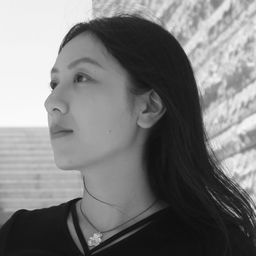New strategy for industrial heritage regeneration from the concept of mosaic art: case of Hanyang Iron Factory
Mon statut pour la session
Quoi:
Paper
Quand:
9:30 AM, Jeudi 1 Sep 2022
(20 minutes)
Où:
UQAM, pavillon J.-A. De Sève (DS)
- DS-R520
| With the development of urbanism, cities in China have attached great importance on “Urban Regeneration” of the remained built industrial heritage since 1980s. When it comes to the transformation of land use from the original industrial area to potential living space with new facilities, the oversize non-human scale of industrial heritage is the most urgent issue: the monotonous “super block” mode of factories brings about low efficiency of space utilization and indifferent communities. This paper takes the Hanyang Iron Factory in Wuhan, China as an example, to explore the optimal scale pattern of blocks in regeneration of industrial heritage in contemporary China, in the aspects of maximization of economic benefit and social balance. The paper analyzes the operation conditions of four typical format of business model in urban regeneration area in Wuhan, by categorizing the shops by different scale valued by amount, location, area, storey of building etc. From three individual aspects of vacancy rate of shops, consumption behaviour of local residence, employment structure, the paper concludes small and diverse scale of blocks with high density of retail stores can quickly increase the local financial gains and maintain social stability: Firstly, as the original blocks in industrial area are divided into small plots, which allows for more diverse modes of land development and scale of management, the vacancy rate of stores is decreased; Secondly, denser retailing can greatly enhance economic vitality of the gradually depressing original site rather than large-scale commercial complex, as the consumption level of the residence in decayed industrial area can’t fit the market goal of the latter; Thirdly, small-scale stores with lower entry thresholds provide more possibility in creating higher employment rate of local people which leading to a more balanced population structure, compared to high-standard shopping malls focusing on recruiting proficient professionals leading to the result of migration of native citizens. On the basis of the performed study, the paper puts forward a new regeneration strategy of industrial heritage in urban design——“Mosaic Blocks”, by dividing large-scale industrial space into pleasant small-scale streets and buildings, evidently increase the accessibility and efficiency of the initially scattered blocks which are isolated from each other due to different production process, eventually forming dynamic city space. The paper makes preliminary study of Hanyang Iron Factory, in order to provide reference for similar cases. This paper is subsidized by NSFC project which is named as <Research on Time and Space Elements and Expression System of "Sharing Architecture">, NO.51978468. Keywords: Industrial Heritage Regeneration, Mosaic Art, Hanyang Iron Factory |
